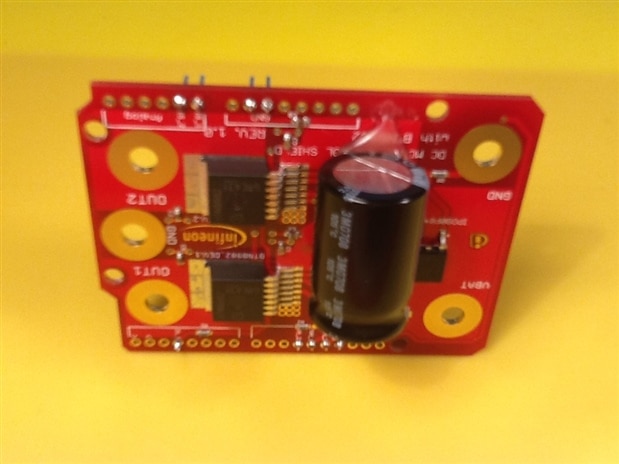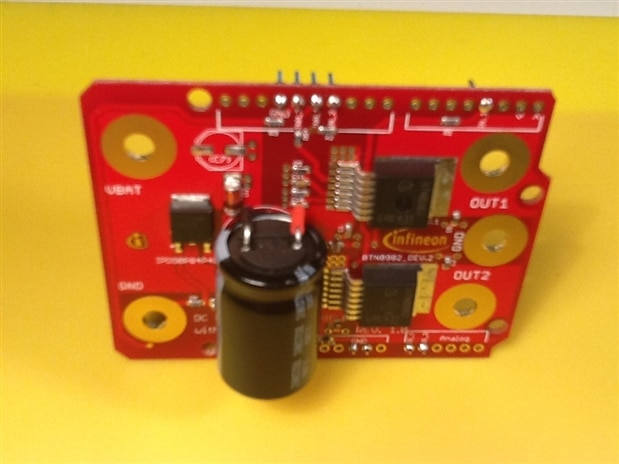The DC Motor Driver shield is Infineon's evaluation board for their very capable 1/2 H-Bridge driver IC BTN8982 .
They have designed a nice and easy to use schematic in the Arduino form factor. That makes it easy to set up a test bed to evaluate the drivers.
That design form is also a reason for annoyance. It's a great product that can find its way into many motor applications - but the shield is not done right.
When you unbox the shield you stand in awe. A very nice (yes: beautiful) board. Much thought has been put in heat management - that is so well executed that it can serve as an example on how to deal with heat on a PCB.
Then you try to stack it on an Arduino Yun, or even the most used UNO. And that doesn't look good. The high power contacts are straight above grounded connectors. If you want to use bolts or decent connectors for the high current wiring, you have to use multiple stacking headers to get a safe clearance.
Then you try to stack an LCD shield on top. The big upright cap is in the way of any shield out there in the market. So in stead of evaluating the drivers, the reviewer will spend time in replacing that cap, ordering an extra batch of stacking headers, and throwing arms in the air.
And as extra fuel on the fire, the example code that is announced in the Quick Start Guide (typically the first thing you look for when acquiring a shield), it's not there. either that, or I am blind and can't find it.
It's a shame. These easy to avoid design decisions will blur reviews that otherwise would have been all positive. And the H-Bridges deserve a positive review.
The drivers
The specs for the BTN8982 are respectable:
They can manage motors over a decent voltage and current range:
250 W continuous
8 - 18 V (nominal values, a wider range is acceptable)
55 A (not on this shield - the traces on this evaluation board allow up to 30 A).
To meet EMI regulations, you can lower the slew rates of your PWM signal.
Protections and current measurement sensing on board.
And they are easy to drive. The duty cycle of your PWM signal determines the motor speed.
I am going to pimp this shield into a more useful format and continue blogging about its capabilities once my stacking headers arrive from Chenzen.
Here's a follow up post where I'm actually using the shield: Vintage Turntable repair: Can I fix a Perpetuum Ebner from 1958 - part 3 - Infineon Motor Driver shield




Top Comments